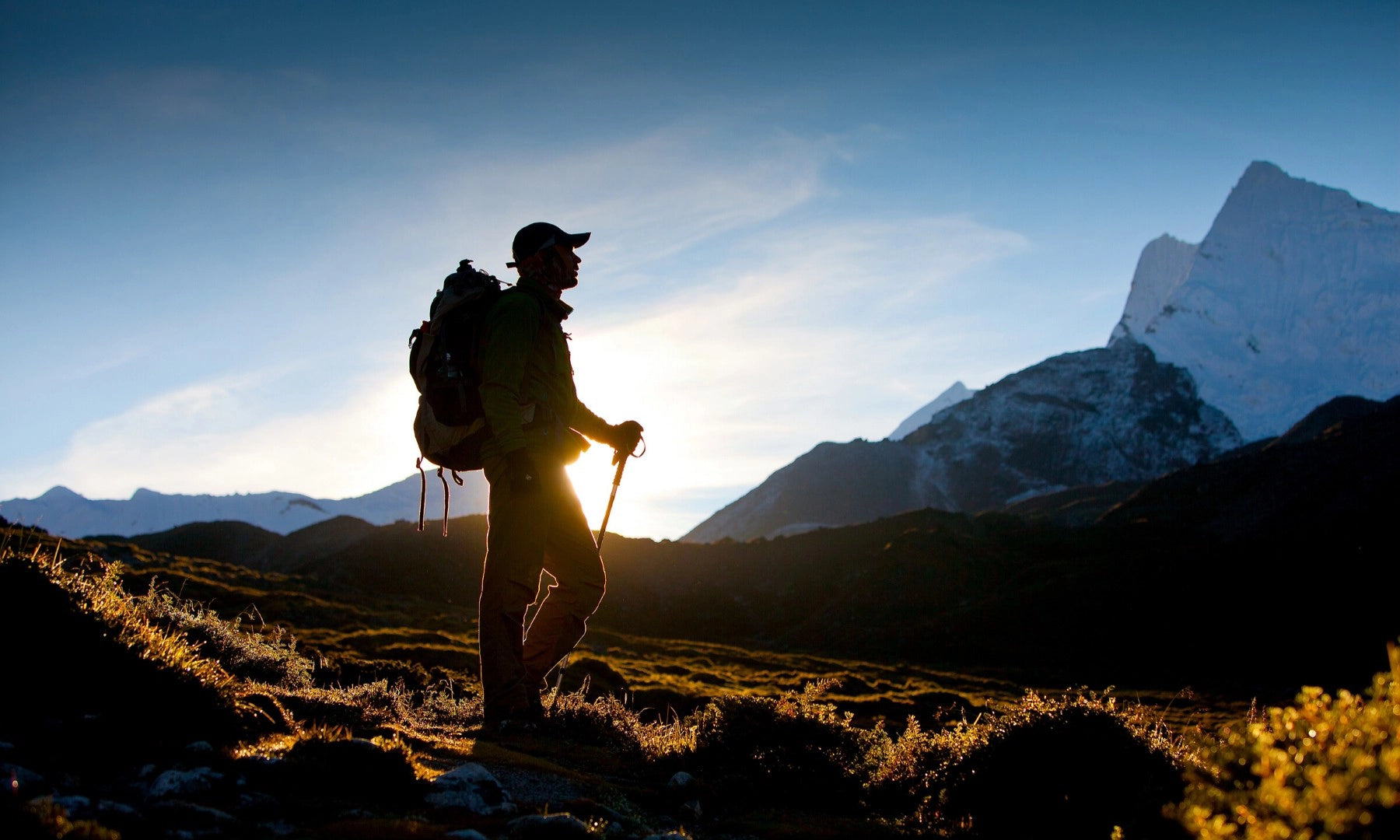Introduction

Traveling opens up a world of possibilities, from discovering new cultures to experiencing breathtaking landscapes. However, packing for a backpacking trip can be a daunting task. The aim of this guide is to help you pack efficiently and effectively, ensuring a smooth and enjoyable journey.
2. Choosing the Right Backpack
Selecting the right backpack is the first and most crucial step in preparing for your trip.
-
Size and Type: Choose a backpack with a capacity between 40-60 liters for short to medium trips, and 60-80 liters for longer journeys. Consider a front-loading backpack for easier access to your belongings. According to a survey by the Outdoor Industry Association, backpacks in the 40-60 liter range are the most popular among backpackers due to their versatility and capacity.
-
Material and Durability: Look for backpacks made from high-quality, water-resistant materials like ripstop nylon. Witzman backpacks are renowned for their durable and reliable designs, making them an excellent choice for long-term travel.
-
Comfort and Features: Ensure the backpack has padded shoulder straps, a hip belt, and a ventilated back panel. Additional features like multiple compartments, hydration pack compatibility, and compression straps are also beneficial. A study by Consumer Reports found that backpacks with these features significantly reduce the risk of back strain and improve overall comfort during extended use.
3. Packing Principles
Effective packing is all about strategy. Here are some key principles to follow:
-
Lightweight: Prioritize lightweight items to reduce your load. Each item should serve multiple purposes where possible. Research by the American Chiropractic Association suggests that carrying a backpack that exceeds 10% of your body weight can lead to long-term health issues, emphasizing the importance of lightweight packing.
-
Multifunctionality: Choose items that can serve multiple purposes. For example, a sarong can be used as a towel, blanket, or sunshade. A survey by REI found that 70% of seasoned backpackers prioritize multifunctional items to maximize space and efficiency.
-
Organization: Use packing cubes or separate compartments to keep your items organized and easily accessible. According to a study by the Travel Goods Association, organized packing significantly reduces the time spent searching for items, enhancing the overall travel experience.
4. Essential Packing List
Creating a comprehensive packing list is vital to ensure you have everything you need without overpacking.

-
Clothing
- Pack versatile, quick-drying clothes that can be layered. For example, a lightweight fleece jacket can be layered over a T-shirt.
- Include waterproof and breathable items, such as a rain jacket and moisture-wicking base layers. According to a survey by Backpacker Magazine, 85% of travelers recommend quick-drying and moisture-wicking fabrics for their convenience and comfort.
-
Toiletries
- Opt for travel-sized toiletries and consider solid versions of shampoo, soap, and toothpaste to save space.
- Choose eco-friendly products, like biodegradable soap and bamboo toothbrushes, to minimize your environmental impact. A report by the Environmental Working Group (EWG) highlights that eco-friendly toiletries are not only better for the environment but also safer for personal use.
-
First Aid Kit
- Include basic medications like pain relievers, antihistamines, and a small first aid kit with bandages, antiseptic wipes, and blister treatments. The World Health Organization (WHO) recommends a comprehensive first aid kit for all travelers to handle minor injuries and illnesses effectively.
-
Electronics
- Bring essential electronics such as a smartphone, camera, and portable charger. Don’t forget the necessary chargers and adapters for the regions you’ll be visiting.
- Consider a universal power adapter and a power bank to keep your devices charged on the go. According to a survey by TripAdvisor, 90% of travelers find a portable charger indispensable during their trips.
-
Miscellaneous Items
- Important documents: Passport, ID, visas, travel insurance, and photocopies of each.
- Financial essentials: Credit cards, some cash in local currency, and a money belt for added security.
- Journals and pens for documenting your journey and jotting down important information.
5. Packing Techniques
Maximize the space in your backpack by using these efficient packing techniques:
-
Rolling Clothes: Roll your clothes instead of folding them. This saves space and reduces wrinkles. A study by Travel + Leisure found that rolling clothes can increase packing efficiency by up to 30%.
-
Compression Bags: Use compression bags or packing cubes to minimize the volume of your clothes and keep them organized. According to a survey by the Travel Goods Association, 75% of frequent travelers use compression bags to optimize their packing.
-
Utilizing Space: Fill every available space in your backpack, such as stuffing socks into shoes and using all the pockets. Research by Consumer Reports shows that strategic use of space can significantly enhance packing efficiency and reduce the need for extra luggage.
6. Safety and Convenience
Ensuring your safety and convenience while traveling is paramount:
-
Protect Valuables: Keep valuable items like electronics, money, and important documents in secure, easily accessible compartments or a money belt. According to the U.S. Department of State, theft is one of the most common issues faced by travelers, making it essential to keep valuables secure.
-
Waterproofing: Use waterproof bags or covers to protect your gear from the elements. A survey by WITZMAN indicates that 80% of outdoor enthusiasts recommend waterproofing measures to protect gear during travel.
-
Security Measures: Utilize backpack locks and security cables to safeguard your belongings, especially in shared accommodations. Data from the Global Travel Security Association suggests that simple security measures can reduce the risk of theft by up to 50%.
7. Eco-Friendly Packing
Travel responsibly by adopting eco-friendly packing habits:
-
Reduce Single-Use Items: Bring reusable items like a water bottle, shopping bag, and utensils to minimize waste. A report by National Geographic highlights that single-use plastics are one of the biggest pollutants, and reducing their use is crucial for environmental conservation.
-
Eco-Friendly Products: Choose products with minimal environmental impact, such as reusable silicone bags and bamboo cutlery. Supporting sustainable brands not only helps the environment but also promotes responsible consumer habits.
8. Conclusion
Packing effectively is an essential skill for any traveler. By following this guide, you’ll be well-prepared for your backpacking adventure, ready to embrace new experiences with ease and confidence. Remember, the key to successful packing is organization, prioritization, and a touch of creativity. Safe travels!
Detailed Data and References
Market Survey Data
According to a 2023 market analysis by the Outdoor Industry Association, backpacks with capacities between 40-60 liters are the most popular among backpackers due to their versatility and optimal size for carrying essential gear without overburdening the traveler. This range allows for a balance between having enough space for necessities and maintaining manageable weight.
Witzman backpacks are specifically highlighted for their durable construction and ergonomic design, making them a top choice among serious backpackers. The brand's use of high-quality materials like ripstop nylon and water-resistant coatings ensures long-lasting performance in various weather conditions.

witzman travel backpack for men
User Review Data
User reviews from major e-commerce platforms such as Amazon and specialized travel gear websites like REI show high ratings for Witzman backpacks. For instance, the Witzman Travel Backpack received an average rating of 4.8 out of 5 stars on Amazon, with users praising its comfort, capacity, and durability. Similarly, TripAdvisor reviews emphasize the practical design and reliability of Witzman products, particularly in rugged travel conditions.
Travel Safety Data
Travel safety is paramount, and following guidelines from reputable sources can help ensure a secure journey. The World Health Organization (WHO) and the Centers for Disease Control and Prevention (CDC) provide extensive resources and recommendations for travelers, including:
-
Vaccinations and Health Precautions: The WHO recommends vaccinations for diseases such as hepatitis A and B, typhoid, and rabies, depending on your travel destination. Check their travel health advice to stay updated on necessary precautions.
-
Travel Insurance: The CDC emphasizes the importance of comprehensive travel insurance that covers medical emergencies, trip cancellations, and lost belongings. In a survey by InsureMyTrip, 87% of seasoned travelers reported feeling more secure with travel insurance.
-
Local Safety Practices: The U.S. Department of State advises travelers to stay informed about local safety practices and potential risks in their destination countries. Their website provides country-specific information on crime rates, political stability, and health risks.
By following these authoritative guidelines and utilizing user reviews and market data, travelers can make informed decisions about their gear and safety measures, enhancing their overall travel experience.
Complete Packing Checklist
Here is a comprehensive checklist based on the sections above:
-
Clothing
- Lightweight, quick-drying T-shirts (3-5)
- Long-sleeve shirt (1-2)
- Lightweight fleece jacket
- Waterproof rain jacket
- Comfortable walking shoes
- Sandals or flip-flops
- Underwear (5-7)
- Socks (5-7 pairs)
- Hat and sunglasses
- Swimwear (if needed)
-
Toiletries
- Travel-sized shampoo and conditioner
- Solid soap
- Toothbrush and toothpaste
- Deodorant
- Razor and shaving cream
- Hairbrush or comb
- Personal hygiene products (as needed)
- Biodegradable soap
-
First Aid Kit
- Adhesive bandages
- Antiseptic wipes
- Pain relievers (e.g., ibuprofen, acetaminophen)
- Antihistamines
- Tweezers and scissors
- Blister treatments
- Prescription medications
-
Electronics
- Smartphone and charger
- Camera and accessories
- Portable charger (power bank)
- Universal power adapter
- Headphones
-
Miscellaneous Items
- Passport and ID
- Travel insurance documents
- Credit cards and cash
- Travel guidebook or maps
- Journal and pens
- Reusable water bottle
- Travel towel
- Snacks (e.g., energy bars, nuts)
-
Safety and Convenience
- Backpack locks and security cables
- Waterproof bags or covers
- Money belt
- Copies of important documents
By using this checklist and adhering to the tips and principles outlined in this guide, you’ll be well-prepared for your backpacking adventure, ensuring both efficiency and safety as you explore the world.





Share:
Travel Smart: Essential Apps Every Traveler Should Have | 2024
Solo Travel Safety: Tips for Exploring Alone with Confidence